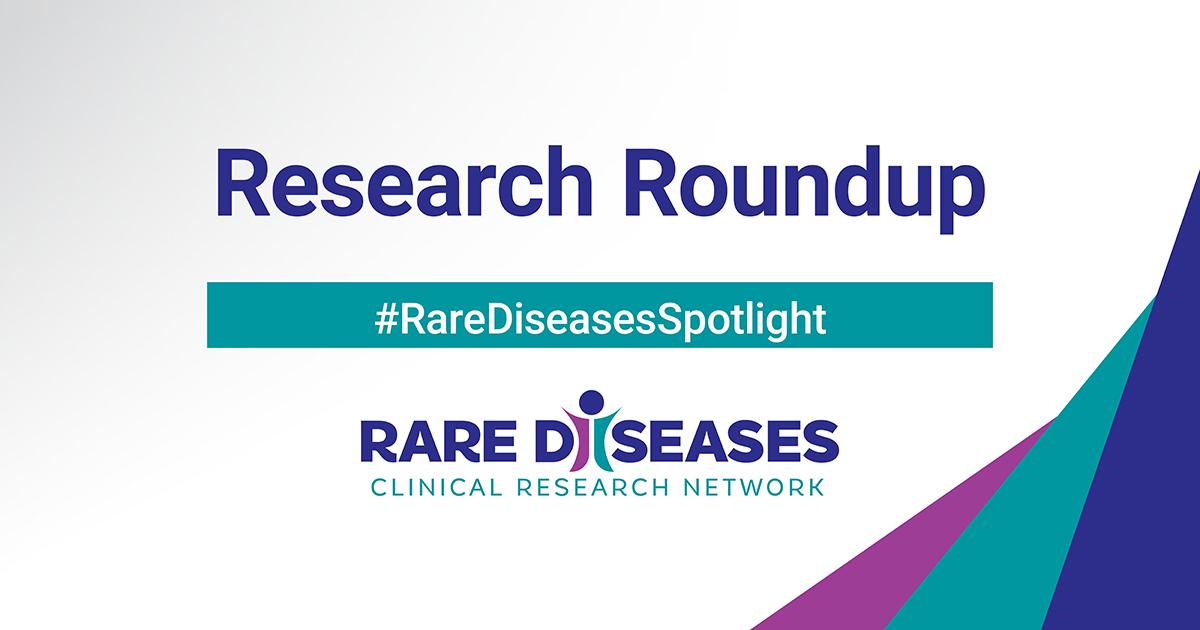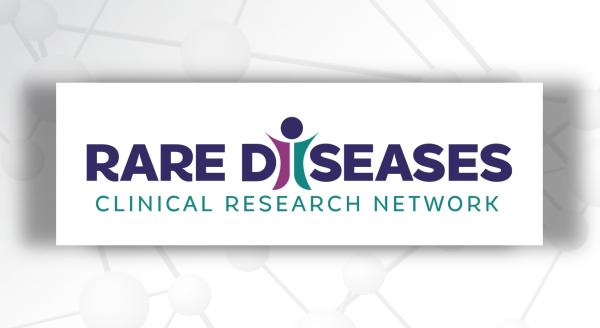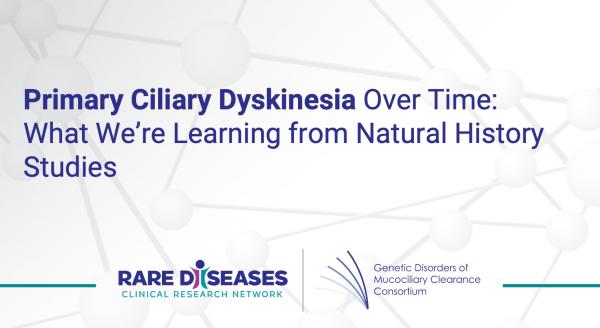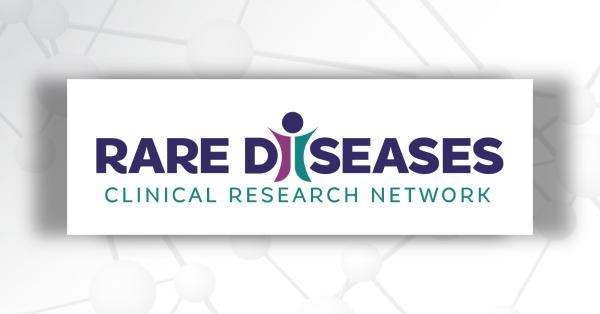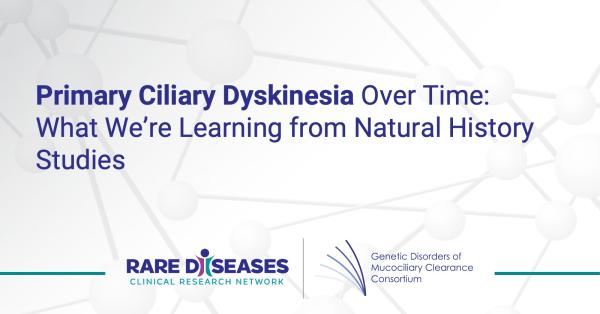Each month, we share summaries of recent Rare Diseases Clinical Research Network (RDCRN) grant-funded publications. Catch up on the latest RDCRN research below.
Consortium of Eosinophilic Gastrointestinal Disease Researchers (CEGIR)
Review of Online Patient Forums Sheds Light on Treatment Strategies
Researchers performed a qualitative analysis of electronic health forums seeking to better understand how patients with eosinophilic esophagitis (EoE) experience symptoms, receive care, and cope with their disease. The researchers analyzed conversation threads over a two-year period on three publicly accessible electronic health forums hosting EoE communities. They found that such forums are a valuable, unfiltered source of patient perspectives that allow better understanding of patient needs and goals. Analyses indicated that EoE patients see their disease as sporadic events and lack reliable sources of knowledge, possibly impacting how patients prioritize treatment. Authors conclude that providers must gather evidence-based knowledge, engage in shared decision making, and recognize barriers to disease management beyond clinical settings.
Case Study Offers Insights for Treatment of Hypereosinophilia
In a case study of hypereosinophilia, an allergic inflammatory condition in which white blood cells called eosinophils are at high levels in the body, a pediatric patient had recurrent gastrointestinal symptoms and histology showing elevated eosinophils in biopsy specimens. After excluding secondary causes of gastrointestinal eosinophilia, the clinicians diagnosed the patient with eosinophilic gastroenteritis (EGE). Eosinophilic gastritis (EG) and EGE are a heterogeneous group of rare disorders due to selective eosinophilic infiltration causing inflammation in the stomach and small intestine, in the absence of other secondary causes of eosinophilia. The exact incidence is unknown but is more commonly diagnosed in children younger than 5 years. In adults, the peak age of diagnosis is in the third decade of life.
Authors say this case exemplifies two key points for healthcare providers: 1) Refer patients presenting with peripheral eosinophilia and recurrent or persistent gastrointestinal (GI) symptoms for evaluation for an intestinal biopsy and 2) Recognize that eosinophilic gastrointestinal diseases can be diagnosed only after other secondary causes of eosinophilia like parasitic infections or drug-induced causes are ruled out.
Review Paper Explores Treatment Options for Eosinophilic Esophagitis
Eosinophilic esophagitis (EoE) is an allergic inflammatory disease characterized by elevated eosinophils (white blood cells) in the esophagus (the tube connecting the mouth to the stomach). The prevalence of EoE is increasing in children and adults. As a chronic condition currently without a cure, EoE must be carefully managed to prevent complications, such as food impactions in the esophagus or narrowing of the lumen. In this paper, researchers discuss the current approaches for dietary and pharmacologic management of EoE and the need for future clinical trials to help tailor therapies to individual patients with this chronic disease.
New Technology May Improve Patient Experience, Shorten Time to Treatment for Eosinophilic Esophagitis
Eosinophilic esophagitis is a chronic, inflammatory disease of the esophagus often treated with an elimination diet, where patients avoid specific foods that are triggering the disease. The current standard of care for diagnosis and symptom monitoring requires repeated sedated endoscopy procedures over time. After the initial diagnostic endoscopy, many assessments may be needed to establish the correct diet. For patients, these repeated diagnostic procedures raise issues of risk, cost, and lost time from school and/or work. They also extend the time patients must wait to reintroduce foods.
In this study, researchers seeking to address these concerns tested the use of an emerging technology, less invasive monitoring approach compared with standard endoscopy—unsedated transnasal esophagoscopy (TN-Eso) with virtual reality distraction. Although this was a pilot study involving only five patients, the researchers found that TN-Eso was well-tolerated and preferred by patients and families. Tests using the new technology detected the return of esophagitis as soon as two weeks after single-food exposure, suggesting that the timing of food reintroductions could be shortened by 50% to 75%, compared with the traditional endoscopies (which typically occur at 12-week intervals). Study authors say these findings support a shortened challenge period with the use of TN-Eso, which may lead to faster identification of a suitable treatment. The study also demonstrates that food allergen-induced eosinophilic esophagitis occurs within two weeks following exposure to the triggering food.
Stakeholders Develop Consensus for Assessing Mast Cells and Eosinophils in Tissue Biopsies
In human tissue biopsies, mast cells and eosinophils are commonly found. However, for several clinical conditions, there are knowledge gaps in determining diagnostic thresholds and how samples are processed, interpreted, and reported. These discrepancies can delay the correct diagnosis of a patient’s condition.
A work group of pathology, allergy, dermatology, hematology/oncology, and gastroenterology stakeholders assembled to address this need. Together, the group developed a standardized approach for assessing mast cells and eosinophils in skin, gastrointestinal, and bone marrow pathologic specimens for the benefit of clinical practice and patients.
Dystonia Coalition (DC)
First Large-Scale Metabolomics Study of Cervical Dystonia Leads to Novel Insights
Cervical dystonia is the most common adult-onset focal dystonia. Researchers currently believe that cervical dystonia may be caused by a combination of genetic and environmental factors. Although genetic factors have been studied extensively, other factors have not.
To identify potentially abnormal metabolites or altered biological pathways, researchers conducted an exploratory metabolomics analysis of cervical dystonia. The team compared plasma samples from 100 idiopathic cervical dystonia patients and 100 controls. Results showed that altered biological pathways may relate to carbohydrate and lipid metabolism. Study authors say this may provide novel insights into the biology of cervical dystonia.
Frontiers in Congenital Disorders of Glycosylation (FCDGC)
Variants in STT3A Gene Linked to Congenital Disorder of Glycosylation
Congenital disorders of glycosylation (CDGs) are a group of rare diseases characterized by hypoglycosylation. The STT3A gene plays an essential role in protein N-glycosylation.
In this study, researchers identified 16 individuals from nine families who have variants in STT3A, leading to an autosomal-dominant CDG. They describe the features of these individuals including variable skeletal anomalies, short stature, large head, muscle cramps, and in some, intellectual disability. The authors also present data to support a dominant form of STT3A-CDG that is unusual among type I CDGs.
Nephrotic Syndrome Study Network (NEPTUNE)
JAK-STAT Signaling Pathway Likely Plays Key Role in Diverse Kidney Diseases
IgA nephropathy, also known as Berger’s disease, is a kidney disorder that occurs when IgA (immunoglobulin A), a protein that helps the body fight infections, settles in the kidneys. Deposits of IgA may cause the kidneys to leak blood and sometimes protein in the urine and lead to progressive kidney fibrosis or scarring. Researchers seeking to understand and target the mechanisms behind the disease undertook detailed investigations of the Janus kinase signal transducer and activator of transcription (JAK-STAT) pathway, which is believed to be an important mediator of kidney disease. They compared 77 patients with IgA nephropathy with 45 healthy subjects. Researchers found that JAK-STAT signaling was activated in patients with IgA nephropathy compared with controls, finding altered responses in peripheral immune cells and increased message and activated proteins in the kidney function. Authors say their findings strongly support that the JAK-STAT signaling pathway is altered in diverse kidney diseases, in ways that are likely unique to each disease.
Review Paper Examines Role of Metainflammation in Diabetic Kidney Disease
“Metainflammation” is a term used to describe a link between metabolic disorders and a form of low-grade systemic and chronic inflammation. This review paper examines the role of metainflammation as a mediator of complications of diabetes and a contributor to the development of diabetic kidney disease. Authors summarize the contribution of inflammation induced by diabetes and related signaling pathways to complications related to diabetes, focusing on the interplay between innate immunity and lipid metabolism.
Researchers Identify Potential Biomarker for ANCA-Associated Vasculitis
ANCA-associated vasculitis (AAV) is a group of diseases characterized by the destruction and inflammation of small vessels. Up to 70% of patients with AAV develop glomerulonephritis (GN), which is inflammation of the tiny filters in the kidneys (glomeruli). Of those, 26% progress to end-stage kidney disease. Researchers are seeking to develop a noninvasive biomarker of active renal vasculitis in order to reliably detect disease before irreversible organ damage occurs. In this study, researchers assessed urinary soluble CD16 (usCD16) as a potential biomarker. They established a reference range and assessed its use in several patient populations. They found that usCD16 is elevated in patients with renal vasculitis. They also found that false positive results can be corrected with urine protein normalization.
The Rare Diseases Clinical Research Network (RDCRN) is funded by the National Institutes of Health (NIH) and led by the National Center for Advancing Translational Sciences (NCATS) through its Division of Rare Diseases Research Innovation (DRDRI). Now in its fourth five-year funding cycle, RDCRN is a partnership with funding and programmatic support provided by Institutes, Centers, and Offices across NIH, including the National Institute of Neurological Disorders and Stroke, the National Institute of Allergy and Infectious Diseases, the National Institute of Diabetes and Digestive and Kidney Diseases, the Eunice Kennedy Shriver National Institute of Child Health and Human Development, the National Institute of Arthritis and Musculoskeletal and Skin Diseases, the National Heart, Lung, and Blood Institute, the National Institute of Dental and Craniofacial Research, the National Institute of Mental Health, and the Office of Dietary Supplements.

